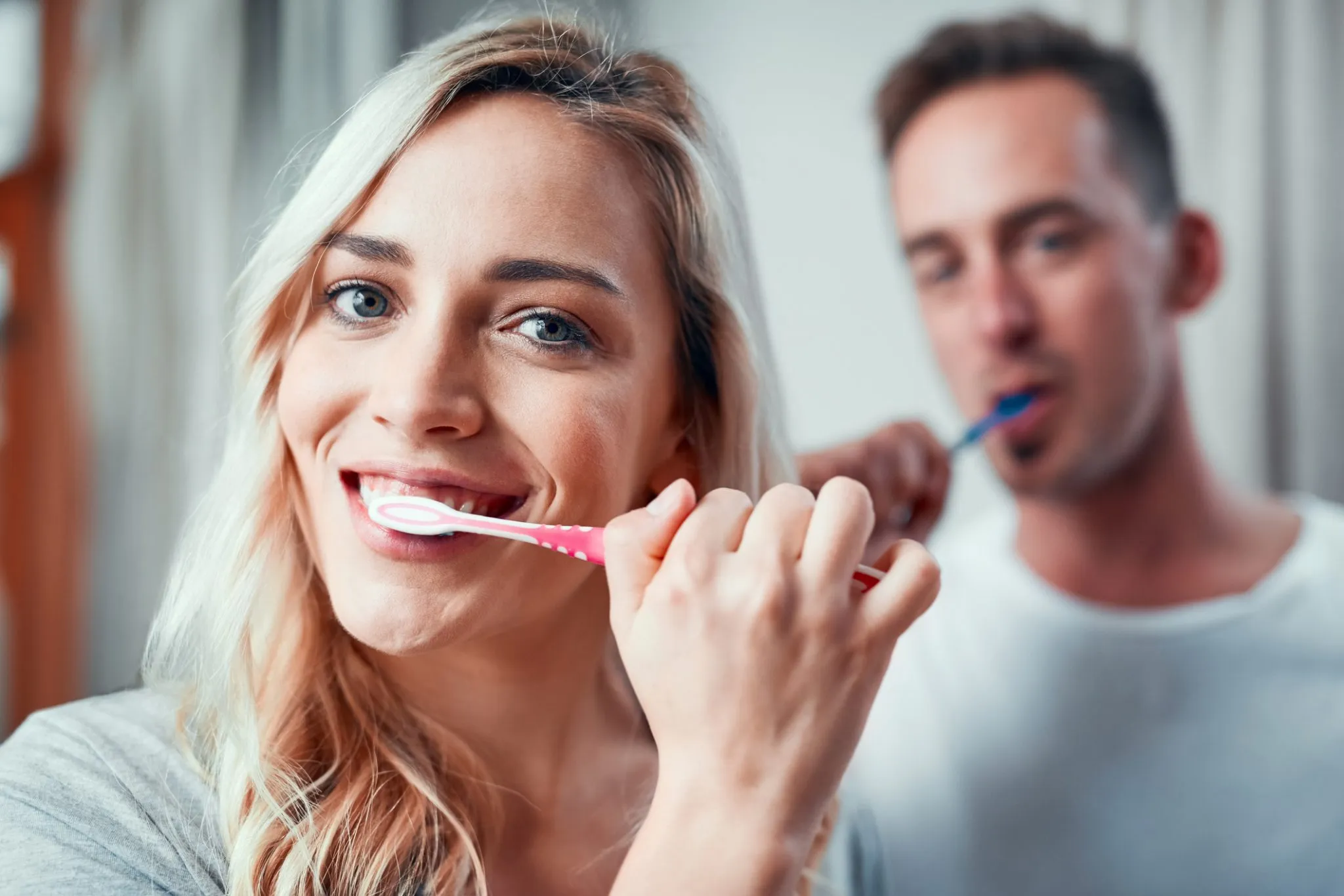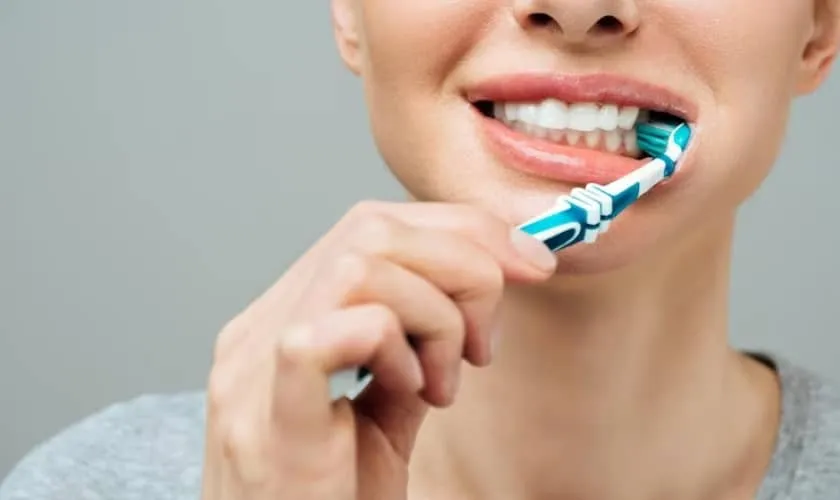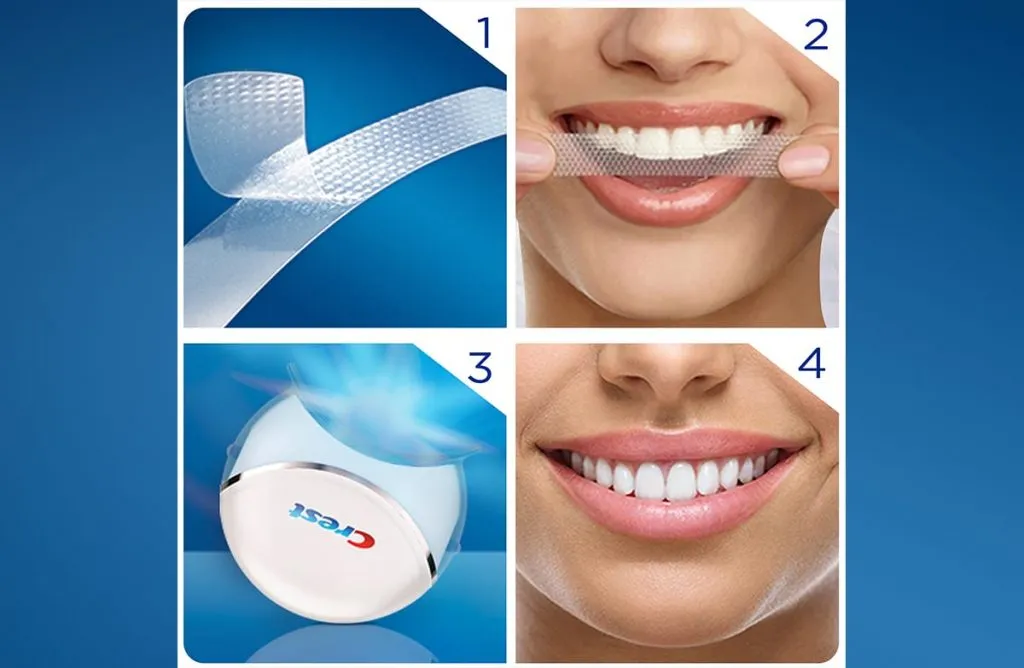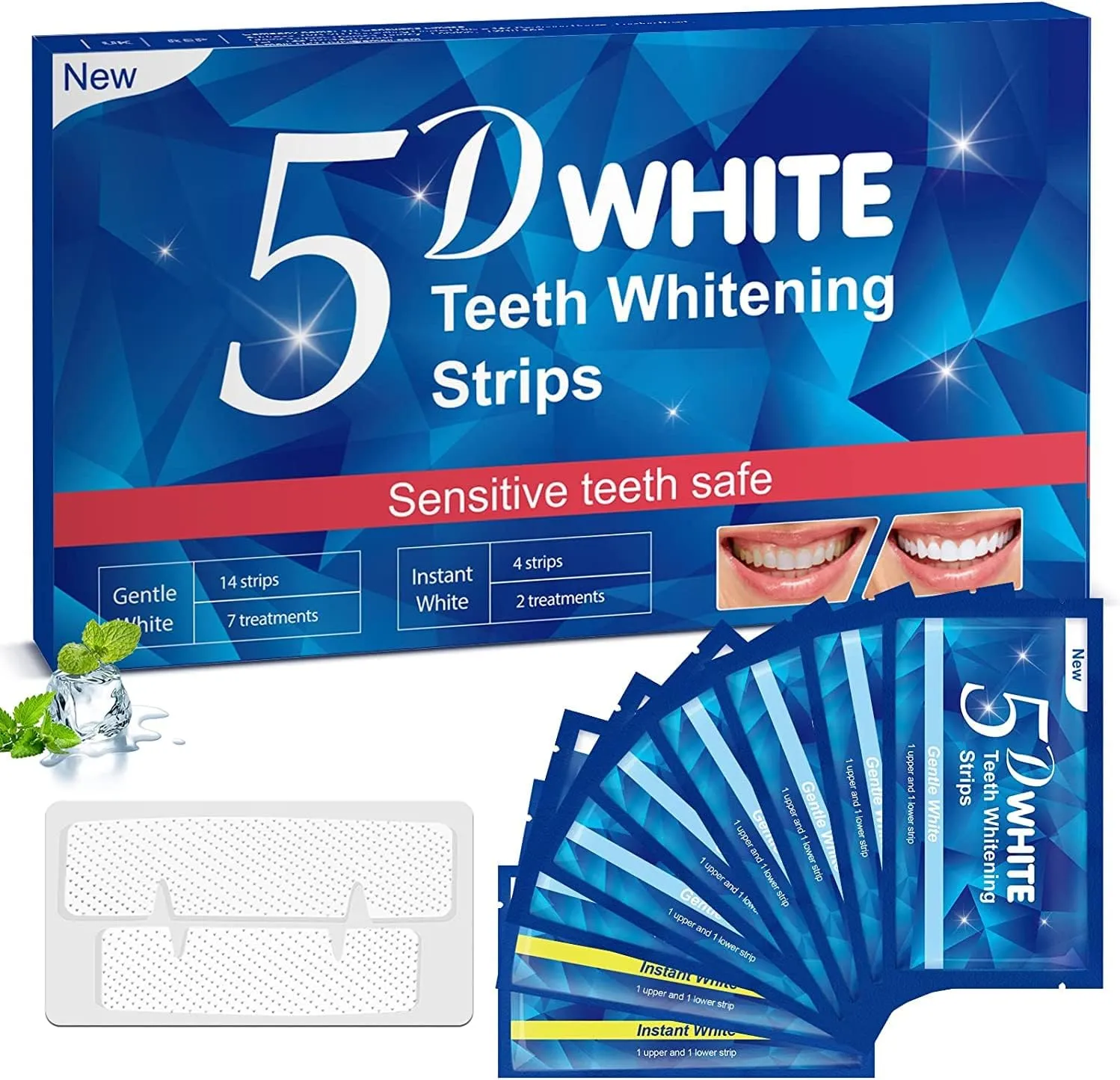What are Brush Teeth Whitening Strips
Brush teeth whitening strips are a popular and convenient method for achieving a brighter smile. These thin, flexible strips are coated with a whitening agent, typically hydrogen peroxide or carbamide peroxide. When applied to the teeth, the whitening agent penetrates the enamel, breaking down stain molecules and resulting in a visibly whiter appearance. The appeal of these strips lies in their ease of use, affordability, and accessibility. They offer a do-it-yourself approach to teeth whitening, allowing individuals to enhance their smile in the comfort of their own homes. The strips are designed to adhere closely to the teeth, ensuring consistent contact with the whitening agent and maximizing its effectiveness. Unlike professional teeth whitening treatments, brush teeth whitening strips provide a less intensive and more gradual whitening process. They are often used as a maintenance step after professional treatments or as a standalone solution for mild to moderate tooth discoloration. It is crucial to understand their functionality before incorporating them into your oral hygiene routine.
How Brush Teeth Whitening Strips Work
The whitening process with brush teeth whitening strips is a chemical reaction. The active ingredient, usually hydrogen peroxide, acts as an oxidizing agent. When the strip is applied to the teeth, the peroxide comes into contact with the stained enamel. The peroxide molecules then break down into smaller molecules that penetrate the enamel. These smaller molecules react with the stain molecules, breaking them apart. This process effectively eliminates the stain molecules, lightening the appearance of the teeth. The duration of the application, usually 30 minutes, allows the whitening agent sufficient time to penetrate and react with the stains. The concentration of hydrogen peroxide in the strips varies, usually between 6% and 10%. Higher concentrations may yield faster results but may also increase the risk of tooth sensitivity. After the application time, the strip is removed, and the remaining gel is rinsed away. Over several applications, stains from coffee, tea, tobacco, and other sources are gradually reduced, leading to a brighter and whiter smile. The efficacy of the process depends on the concentration of the active ingredient and the duration of application.
Choosing the Right Brush Teeth Whitening Strips

Selecting the right brush teeth whitening strips involves several considerations. First, assess the severity of your tooth discoloration. Mild stains may respond well to lower concentrations of whitening agents, while more stubborn stains may require higher concentrations. Consider your sensitivity to teeth whitening products. If you have sensitive teeth or gums, opt for strips with a lower concentration of hydrogen peroxide or those specifically designed for sensitive teeth. Research different brands and read reviews to understand user experiences and identify potential drawbacks. Look for strips that are easy to apply and comfortable to wear. Some strips are designed to adhere better to the teeth, preventing slippage during the application. Check for any additional features, such as a mint flavor for enhanced freshness. Evaluate the cost-effectiveness of the strips. While cost is a factor, prioritize quality and effectiveness over price. Consider the overall value and the number of applications included in the package. Consult with your dentist to determine the most suitable whitening strips for your specific needs and oral health condition. They can offer personalized recommendations based on your individual circumstances.
Brush Teeth Whitening Strip Application Tips
Proper application of brush teeth whitening strips is crucial for achieving optimal results and minimizing potential side effects. Before applying the strips, brush and floss your teeth to remove any surface debris or food particles. Ensure your teeth are dry before applying the strips, as this will help them adhere properly. Carefully peel the strip from its backing and apply it to your teeth, aligning it with the gumline. Gently press the strip onto your teeth, ensuring it adheres fully to the surface. Fold any excess strip behind the teeth to secure it in place. Avoid touching your gums with the whitening agent to minimize irritation. Follow the manufacturer’s instructions regarding the application time, which typically ranges from 30 minutes to an hour. After the recommended time, remove the strips and discard them. Rinse your mouth with water to remove any remaining gel. Avoid eating or drinking for at least 30 minutes after applying the strips to prevent re-staining. Consistency is key to achieving the desired results. Stick to the recommended treatment schedule for optimal whitening. Be patient, as it may take several applications before you notice a significant difference in your teeth’s appearance.
Preparing Your Teeth for Whitening Strips
Preparing your teeth before using brush teeth whitening strips can enhance their effectiveness and minimize potential side effects. Before starting the whitening process, schedule a dental checkup and cleaning. This will remove any plaque, tartar, and surface stains, allowing the whitening agent to penetrate the enamel more effectively. Brush and floss your teeth thoroughly to remove any food particles or debris. Use a soft-bristled toothbrush and gentle brushing technique to avoid irritating your gums. Avoid using whitening toothpaste or mouthwash containing harsh chemicals immediately before or after applying the strips, as this could increase sensitivity. If you have any existing dental work, such as fillings or crowns, consult with your dentist before using whitening strips, as they may not whiten these materials. Consider using a desensitizing toothpaste for a few weeks before starting the whitening process to reduce potential tooth sensitivity. This can help to block the pathways to the nerves in your teeth, decreasing the chances of discomfort. Ensure your teeth are completely dry before applying the strips, as this will help them adhere better and improve the whitening process. By taking these preparatory steps, you can optimize the results of your whitening treatment and ensure a more comfortable experience.
Step-by-Step Guide to Using Whitening Strips

Following a step-by-step guide ensures effective and safe use of brush teeth whitening strips. Start by brushing your teeth gently and flossing to remove any food particles or plaque. Dry your teeth with a clean cloth or tissue to ensure the strips adhere properly. Peel the strip from its backing, carefully handling the gel side. Apply the longer strip to your upper teeth and the shorter strip to your lower teeth, aligning them with your gumline. Gently press the strips onto your teeth, ensuring full contact with the surface. Fold any excess strip behind your teeth to secure it in place. Leave the strips on for the recommended time, typically 30 minutes. Avoid eating, drinking, or smoking while the strips are in place. After the recommended time, remove the strips and discard them. Rinse your mouth thoroughly with water to remove any remaining gel. Avoid swallowing the gel. Avoid eating or drinking for at least 30 minutes after application to prevent staining. Repeat the process as per the manufacturer’s instructions, usually once or twice a day. Keep track of your progress and note any changes in tooth sensitivity or gum irritation. Consult with your dentist if you experience any adverse effects or if you are not satisfied with the results.
Maximizing Results with Brush Teeth Whitening Strips
To maximize the results of brush teeth whitening strips, consider these strategies. Adhere to the recommended treatment schedule. Consistency is key to achieving optimal whitening. Avoid foods and drinks that can stain your teeth during the treatment period. This includes coffee, tea, red wine, and dark-colored berries. Maintain good oral hygiene throughout the whitening process. Brush and floss your teeth regularly to remove surface stains and plaque. Use a straw when drinking beverages that can stain your teeth to minimize contact with your teeth. Consider using a whitening toothpaste as part of your daily oral care routine. This can help to maintain the results of the whitening strips. Avoid smoking, as it can stain your teeth and reduce the effectiveness of the whitening treatment. Consult with your dentist about professional cleaning and other whitening options to complement the use of whitening strips. Be patient and realistic about the results. Teeth whitening is a gradual process, and it may take several applications to achieve your desired level of whiteness. Regularly assess your teeth’s appearance and monitor for any changes in sensitivity or gum irritation. Seek advice from your dentist regarding your oral health and the suitability of your whitening regimen.
Common Mistakes to Avoid with Whitening Strips
Avoiding common mistakes is crucial for a safe and effective whitening experience. Avoid using whitening strips on teeth with existing dental work, such as fillings or crowns, as these materials won’t whiten. Don’t overuse the strips or exceed the recommended application time. Overuse can lead to increased tooth sensitivity and gum irritation. Avoid swallowing the whitening gel. This is not only unpleasant but can also cause gastrointestinal issues. Don’t brush your teeth immediately before or after applying the strips. Brushing can make your teeth more sensitive and may affect the efficacy of the whitening agent. Avoid eating or drinking staining foods and beverages during the treatment period. Don’t share your whitening strips with others, as they are designed for individual use. If you experience any significant tooth sensitivity or gum irritation, stop using the strips and consult with your dentist. Don’t expect instant results. Teeth whitening is a gradual process, and it may take several applications to achieve the desired level of whiteness. Don’t ignore the manufacturer’s instructions. Always read and follow the product instructions carefully for optimal results and safety. Avoid using expired strips, as the whitening agent may not be effective. By avoiding these common mistakes, you can enhance your chances of achieving a brighter, whiter smile.
Aftercare for Brush Teeth Whitening Strips

Proper aftercare helps maintain the results of your brush teeth whitening strips and protects your oral health. After completing a whitening treatment, continue to practice good oral hygiene. Brush and floss your teeth regularly to remove any surface stains and plaque. Avoid consuming staining foods and drinks, such as coffee, tea, red wine, and dark-colored berries, for a few days after each treatment. If you do consume these items, rinse your mouth with water immediately afterward. Use a straw when drinking beverages that can stain your teeth to minimize contact. Consider using a whitening toothpaste to help maintain the brightness of your smile. This can also help to remove any surface stains. Schedule regular dental checkups and cleanings to maintain your oral health and address any potential issues. If you experience any tooth sensitivity, use a desensitizing toothpaste. Avoid smoking, as it can stain your teeth and reduce the longevity of your whitening results. Be mindful of your overall oral health and address any concerns promptly. By following these aftercare tips, you can extend the life of your whitening results and keep your smile looking its best.
Alternatives to Brush Teeth Whitening Strips
While brush teeth whitening strips are a popular choice, various alternatives can enhance your smile. Professional teeth whitening performed by a dentist offers the most dramatic and long-lasting results. This involves the use of a higher concentration of whitening agents and can be done in a single session. Whitening toothpastes contain mild abrasives and chemicals that remove surface stains. However, they typically provide only minor whitening effects. Whitening mouthwashes contain hydrogen peroxide and can help to lighten your teeth over time. However, the results are usually subtle. Custom-fitted whitening trays provided by your dentist allow you to apply a professional-strength whitening gel at home. This method is more effective than over-the-counter strips and offers more control over the whitening process. Dental veneers are thin shells that are bonded to the front of your teeth to improve their appearance. Veneers can correct discoloration, as well as other cosmetic issues. Dental bonding is a procedure where a tooth-colored resin is applied to your teeth to repair chips, cracks, or discoloration. The choice of alternative depends on your individual needs, preferences, and the severity of your tooth discoloration. Consult with your dentist to determine the most suitable whitening method for your specific circumstances. They can offer personalized recommendations based on your oral health and desired outcomes.
